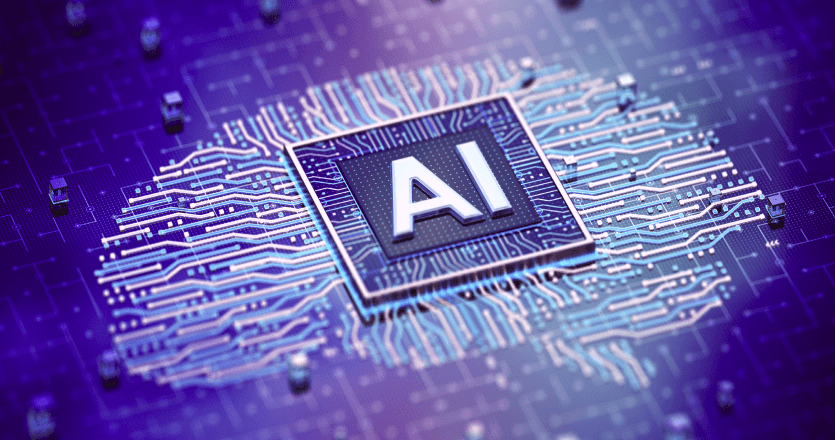Nearly 100 years ago, the film ‘Metropolis’ vividly predicted what a world with AI could look like. The first film to introduce the concept of Artificial Intelligence, Metropolis told the story of a humanoid robot wreaking havoc on a major city. And while this particular film took a rather bleak look at technology that was decades in the making, it also raised questions about AI that are still incredibly relevant today: How should AI be used? Is it good or bad? To what extent should it guide our experiences with technology?
This article explores one of the most exciting elements of AI-powered technology – interactivity – and how much this capability is shaping today’s user experience and engagement. As we trace the journey of AI from its theoretical origins to its current practical applications, we’ll uncover key milestones that have shaped its development and review how it’s shaping user engagement today, and for the future.
The evolution of AI: from early beginnings to cutting-edge technology
1956: The birth of Artificial Intelligence
For most of modern history, there was no word to describe the process of machines mimicking human intelligence. That all changed in 1956 when John McGarthy first coined the term “Artificial Intelligence” while working at the Dartmouth Summer Research Project on Artificial Intelligence, an event widely regarded to be the founding event in the field of AI.
1957-1974: A flourishing era for AI
Between 1957 and 1974, advances in technology surged ahead, making computers faster, more affordable, and more accessible to the public than ever before. In addition, machine learning algorithms saw dramatic enhancements, fueling rapid progress in natural language processing, problem-solving, and the field of neural networks, which was just taking shape at the time.
Late 1970s – Early 1980s: The first AI winter
The late 1970s and early 1980s marked what historians would later call “The First AI Winter,” a period that was characterized by a decrease in funding and reduced interest in the technology as the limitations (and dangers) of AI began to reveal themselves.
1990s: A renaissance in AI
In the 1990s, AI experienced a resurgence fueled by breakthroughs in machine learning, enhanced computational capabilities, and abundant data availability. The advent of deep learning empowered AI systems to learn autonomously and evolve further than ever before, laying the foundations for the cutting-edge AI innovations of today.
How AI has transformed human behavior and interactions
The impact of AI is undeniable. As AI continues to advance, the ways that we engage with technology also inevitably shift and evolve. This is particularly evident when it comes to the ways in which AI has fundamentally transformed user experiences and ushered in an era where interactions with technology are more than just responsive—they’re predictive and personalized.
To fully understand this transformation, we need to look at where this kind of user engagement came from. Over time, the ways that we engage with content on the internet have significantly changed. Early websites were mostly static, with content that offered viewers far less than the web pages and web apps of today. In the late 90s and early 2000s, basic interactive elements, such as links to simple forms, appeared and enabled users to interact with the content on their screen in a new and different way, which paved the way for even greater interactive user experiences and more meaningful engagement.
And as technology progressed even further, so did the complexity and functionalities of interactive features. Web 2.0 introduced us to more sophisticated interactions, such as user-generated content, social media integrations, and interactive multimedia elements. At the same time, websites became evenmore engaging, encouraging users to interact with and share content, and even create content on their own.
Having established these foundations, technology has prepared us for the next significant leap: AI integration. The use of AI in our everyday lives has greatly improved our interactions with technology, moving us beyond clicks to advanced and more intelligent engagements. AI allows systems to grasp user habits, preferences, and behaviors, offering experiences that are more personalized and dynamic. Take chatbots and virtual assistants, for example; they rely on natural language processing (NPL) to engage in dialogues with users, responding promptly to their questions.

Current trends of AI in user engagement
How people engage online is rapidly changing, and AI plays a huge role in this shift. Recent developments show how AI enhances experiences by making them more interactive and engaging. Whether it’s chatbots offering assistance or AI tools creating marketing content, businesses are transforming how they connect with their customers. By using analytics powered by machine learning, companies can predict user behavior and needs, providing customized solutions and proactive support. Furthermore, the integration of AI with augmented reality (AR) and virtual reality (VR) is creating opportunities for captivating users in more dynamic and experiential ways. These trends reflect a move towards a more intelligent user engagement that aims to deliver not just relevant but also highly satisfying interactions.
Enhanced personalization and hyper-targeting
AI has significantly enhanced personalization and hyper-targeting capabilities, allowing businesses to deliver highly specific content and offers to individual users. AI can create detailed user profiles that inform marketing strategies by analyzing data such as browsing history, purchase patterns, and social media interactions. This level of precision ensures that users receive information and advertisements that are most relevant to their interests and needs, leading to higher engagement rates and customer satisfaction. Hyper-targeting goes a step further by using real-time data to adjust marketing messages and offers based on current user behavior and context. This dynamic approach ensures that interactions remain pertinent and timely, maximizing the effectiveness of marketing efforts and fostering a deeper connection between the brand and its audience.
Improved lead generation and conversion
AI is changing the game when it comes to finding and converting leads. Businesses can now focus on promising leads by making processes more efficient and personalized. With the help of machine learning, AI analyzes sets of data that reveal patterns and point to leads. Additionally, AI tools personalize interactions with leads by offering tailored content and responses, boosting conversion rates. Predictive analytics also empower sales teams to predict customer behavior and make decisions to tune their approaches. Through automation of tasks and insightful data analysis, AI paves the way for businesses to attract top-quality leads and enhance conversion rates, ultimately fostering growth and profitability.
Streamlined customer support
AI streamlines customer support by providing efficient, accurate, round-the-clock assistance. AI-powered chatbots and virtual assistants can handle a wide range of customer inquiries, from answering frequently asked questions to troubleshooting issues, thereby reducing the workload on human support agents. These AI systems use natural language processing (NLP) to understand and respond to customer queries conversationally, enhancing the overall user experience. Moreover, AI can analyze customer interactions to identify common issues and areas for improvement, allowing businesses to refine their support strategies. By offering quick and reliable support, AI not only boosts customer satisfaction but also frees up human agents to focus on more complex and high-value tasks.
AI and automation for advanced digital transformation
AI and automation are key drivers of advanced digital transformation, enabling businesses to operate more efficiently and effectively. Automation powered by AI reduces the need for manual intervention in routine tasks, increasing productivity and accuracy. For example, AI algorithms can automate data entry, inventory management, and even complex decision-making processes, allowing employees to focus on strategic initiatives. Additionally, AI enhances digital transformation by providing deeper insights through advanced analytics, helping businesses make informed decisions and stay competitive in a rapidly changing market. The integration of AI with existing digital infrastructures leads to more seamless operations, improved customer experiences, and innovative business models, marking a significant leap forward in the digital age.
Ethical considerations
While the utilization of AI in experiences brings about advantages, it also poses ethical dilemmas and hurdles that require attention. One significant concern revolves around privacy, as AI platforms often depend on data to provide tailored services. It is crucial to ensure that all user data collected and utilized complies fully with data protection laws. Transparency is equally vital; users should be informed about the usage of AI and have control over their data and engagements.
Bias in AI algorithms present another obstacle, as these systems may inadvertently perpetuate biases existing in the training data, resulting in unfair outcomes. Ensuring that AI systems are trained on unbiased datasets, along with conducting bias audits, is key to fostering fairness and equality in AI-driven interactions.
Lastly, there’s the issue of reliance on AI. While AI can boost efficiency and engagement, excessive dependence on automated systems could diminish human touch and discernment. Striking a balance between automation and human input is essential to ensure that AI systems complement rather than replace human interactions.

What the future holds for AI interactions
The future of AI-driven interactivity is undoubtedly very promising, offering ongoing advancements in AI technologies set to enhance and expand its applications. Here are some potential future developments that we may witness sooner than later:
Context-aware interactions: In the future, AI systems will become much better at recognizing context, understanding not just the content of interactions but also the context in which they occur, leading to more impactful replies.
Emotional intelligence: AI systems are beginning to incorporate emotional intelligence, recognizing and responding to human emotions and enhancing the empathy and responsiveness of AI-driven interactions.
Multimodal interactions: Combining multiple modes of interaction, such as voice, text, and gestures, will create more natural and flexible interfaces. Multimodal AI systems will be able to switch seamlessly between different interaction modes based on user preferences and context.
Collaborative AI: Most people think that AI will replace them, but on the contrary, AI technology is set to collaborate with humans in fields, enriching skills and offering immediate support. This will be particularly valuable in sectors like healthcare, education, and creative industries.Ethical AI development: Efforts to develop ethical AI systems will become more prominent, with a focus on transparency, accountability, and fairness. Ensuring that AI-driven interactivity aligns with societal values and ethical principles will be crucial.
AI-driven interactivity and digital signage
In the world of displays, the use of AI for interactivity has promise in transforming how businesses engage with viewers. Typically, digital signage features set content on screens. By incorporating AI technology, these displays can now interact in real-time, leading to richer and more customized viewer experiences.
Enhancing customer engagement
Digital displays powered by AI can utilize data points like demographic information, behavioral patterns, and real-time context to personalize content for a particular audience at any given moment. For instance, a digital display in a hotel lobby can recommend nearby restaurants and attractions based on the guests’ preferences and previous activities.
Interactive displays
Interactive digital signage allows users to engage directly with the content through touchscreens, voice commands, or gestures. AI can enhance these interactions by providing intelligent responses and suggestions. For instance, a customer in a shopping mall could use an interactive kiosk to find store locations or check product availability, with the AI system guiding them through the process and offering personalized deals based on the time of day and popular items among other users.
Adaptive content
One of the most powerful aspects of AI-driven interactivity in digital signage is its ability to adapt content in real-time. Weather conditions, local events, and social media trends can all influence what content is displayed. For example, a restaurant’s digital menu board might highlight hot drinks on a cold day or promote specific dishes during a local festival.

As AI technology continues to advance, the range and complexity of AI-driven interactions will only grow, offering more opportunities and challenges. Developing and implementing these systems ethically, securely, and transparently is crucial to unlock their potential and create a future where AI-driven interactions enrich experiences in every aspect of life. Looking back at the concerns raised in the film “Metropolis” a century ago, we are reminded of the importance of guiding AI development with care. By learning lessons from stories and prioritizing responsible approaches, we can ensure that AI contributes to making a positive impact on society. This thoughtful approach to AI also extends to innovations like digital signage, which can use AI to deliver dynamic, personalized content ethically and effectively.
Yodeck is aiming to change the user experience thanks to the use of AI, with many other applications coming up in the near future. To stay up-to-date with more insights, visit our blog.
